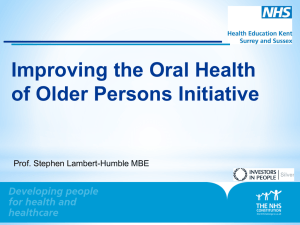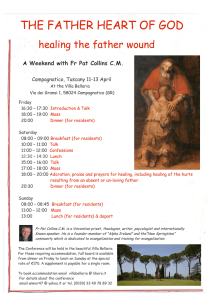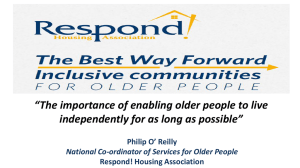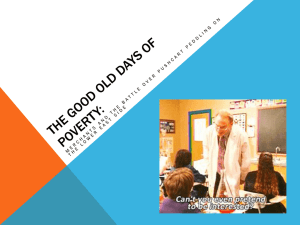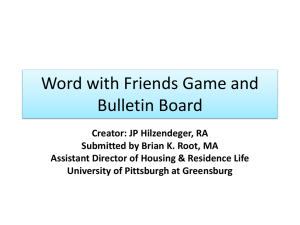Self-sufficiency
advertisement
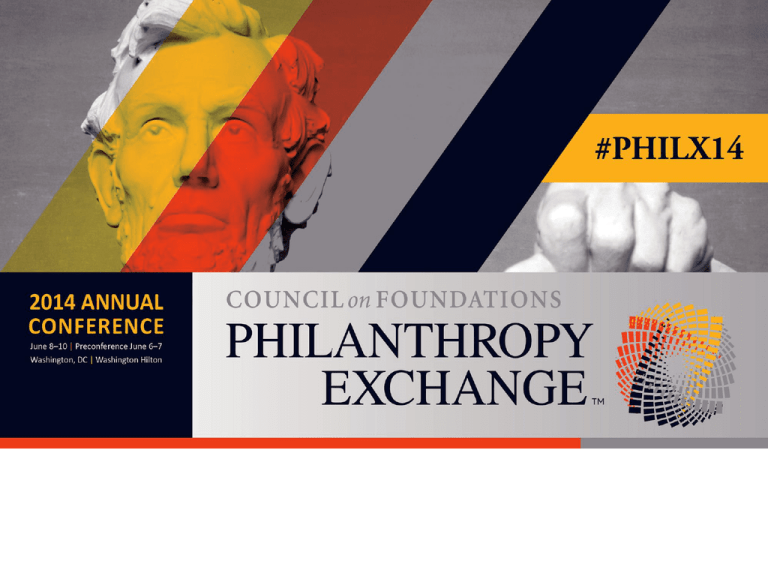
Re-committing to Rural America: The Expanding Crisis of Rural Poverty and Its Effects Carla Roberts Fremont Area Community Foundation Fremont Area Community Foundation serves Newaygo County, Michigan • Rural county of 48,000 residents in 23 townships, four small cities, and one village • Poverty rate at 18.3% above the both MI (16.3%) and national (14.3%) • Educational attainment at 22.3% below state (36.8%) and national (38.3%) achievement rates • Unemployment rate at 7.2% just below MI (7.4%) and below the national (6.3%) rates Assets in Newaygo County Michigan • Home of Gerber Baby Food, now part of global company Nestle Nutrition • Significant personal wealth created in the past—at one point Fremont had the largest concentration of millionaires in the county • Abundant Natural Resources • Forests, like the Manistee National Forest, produce an abundance of fresh air and abound with wild life, such as turkey, pheasant, and venison. • Freshwater lakes and streams run clear, providing world class fly fishing habitats for steelhead, trout, and salmon. • Fertile soils produce a rich variety of local food sources—like fresh vegetables and fruit. Community Foundation Assets • A Declaration, unique positioning document (www.tfacf.org) • Over $225 M; among the largest per capita rural foundations in the US • Trustees seeking greater impact with the courage to change • Collaborative staff who work across departments for the greater good • Earliest funds dating to 1933 are focused on vulnerable populations • • Harry Williams (shoes for all children) • J. Andrew & Mattie Gerber (worthy poor & charity patients) Needs assessments, focus groups, and planning retreats (2003-2008) culminated in a strategic planning retreat in 2011 to forge a new path Our Process • Fellowships focused on studying past priorities and determining the impact of prior philanthropic investments • Board & staff committees to explore new grantmaking approaches • Investments in research studies and baseline data • Vetting ideas with community partners • Developing grantmaking frameworks • Unveiling frameworks in a half-day workshop June 17 Priorities Outcomes Benchmarks Strategies Poverty to Prosperity Goal Poverty to Prosperity Goal • Reduce the poverty rate in Newaygo County below national average within the next 10+ years. Where we plan to focus our funding: • Self-sufficiency • Develop efficient pathways to increase the level of self-sufficiency of individuals with potential by building on strengths Priorities • Asset development • Develop efficient pathways to help individuals build personal assets • Social capital/empowerment • Increase opportunities for individuals to build social networks, supportive relationships, and self-esteem Desired results: • Self-sufficiency • Improve wraparound services provided to struggling residents • Increase % of residents receiving support for self-improvement, independence, and self-efficacy • Increase the number of residents that become independent from assistance/level of self-sufficiency • Decrease the total dollar amount of direct basic assistance residents are receiving • Improve collaborative services to reach more young adults Outcomes • Asset development • Build financial capital*/assets of residents • Build physical capital*/assets of residents • Build human capital*/assets of residents • Improve budgeting skills and financial literacy • Improve credit scores and access to credit • Social capital*/empowerment • Increase mentoring and relational support • Improve how connected and supported residents feel in their communities, strengthen relationships • Increase self-esteem and sense of empowerment among struggling residents to make positive life changes *Financial capital: monetary resources (savings, credit, loan capital, emergency funds, investments) *Physical capital: property (housing/home ownership, vehicles, business property) *Human capital: knowledge, skills and abilities of individuals or groups (educational degrees/certificates, training, life skills) *Social capital: the networks of relationships and social connections among people who live in a particular community which enable them to function effectively and encourage social cooperation Possible indicators that our community is making progress: • Self-sufficiency • 1Establish clear roadmap for self-sufficiency through agency collaboration • 1Number of residents receiving self-sufficiency services • 2Average self-sufficiency level • 2Average income, employment status, level of education • 3Number of residents moved off direct assistance (reach self-sufficiency) • 3Dollar amount spent on direct assistance • *Poverty rate compared to national average • *Number of residents living below self-sufficiency level • *Opportunity score (+ components such as inequality, youth inclusion) Benchmarks 1Short-term: (6 months–1 year) term: (1-3 years) 3Long-term: (2-5 years) *Extended term: (track up to 10+ years) 2Intermediate • Asset development • 1Number of residents that receive financial education and counseling • 1Number of residents that receive low-interest loan/start saving • 2Level of financial literacy/credit score • 2Number/percentage of residents that successfully repay loan • 2Level of savings/improvement in savings behavior • 2Number/percentage of residents that meet savings goal & acquire asset • Social capital/empowerment • 1Number of events held and new methods developed for residents to build relationships • 1Number of residents taking advantage of mentoring/advocacy services • 2Level of connection/how supported residents feel • 2Level of community engagement • 3Level of self-esteem/sense of empowerment among residents Some suggestions for community partners: • Self-sufficiency • Provide wrap-around services to meet basic needs plus tailored personal development coaching and support (ex: food trucks + nutritional skills development) • Encourage long-term personal investment (ex: provide flexible zero-interest microloans for immediate needs paired with longterm savings guidance) • Infrastructure to support poverty reduction (transportation) Strategies • Asset development • Personal asset-building network with financial counseling (ex: Individual Development Accounts) • Microloans/micro-investing for small business or social/microenterprise • Social capital/empowerment • Build peer support/social networks to increase sense of community/build relationships • Build mentoring network with Prosperity Advocates to build on strengths and provide relational support • Engage residents to increase their voice, power, community participation, ownership of community assets, and to learn from them Where we plan to focus our funding: Priorities •Self-sufficiency •Asset development •Social capital/empowerment Desired results: Outcomes •Improve wraparound services •Increase self-sufficiency (average level, # served) •Build personal assets (financial, physical, human, social) •Increase mentoring and relational support •Strengthen relationships, increase self-esteem/empowerment •Improve collaborative services to reach more young adults Possible indicators that our community is making progress: Benchmarks •Poverty rate compared to national average •# living below self-sufficiency level, average self-sufficiency level •Opportunity score (+ inequality & youth inclusion score) •Level of self-esteem/sense of empowerment/engagement •$ spent on direct assistance Some suggestions for community partners: Strategies •Wraparound services (foodtrucks) + personal development coaching •Infrastructure (transportation) •Personal asset-building network + financial counseling + microloans/microenterprise •Mentoring network w/Prosperity Advocates/relational support •Resident engagement Reduce local poverty rate below national average within 10+ years Provided to Resource Center: • Poverty Final Report • Community & Economic Development Final Report • Education Policy Brief • Education Grantmaking Framework (Goal 2025) • Community & Economic Development Grantmaking Framework • Powerpoint (includes Poverty to Prosperity Grantmaking Framework) Thank you for listening to our story!

